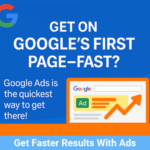Many pest control owners ask the same set of questions when they think about online marketing for their business. You want steady phone calls, whatsapp messages, chat messages and form submission not guesswork. You also don’t want to waste money. This article explains to you the money side of Google Ads in clear, simple language—how much it costs, what budget to keep, what return to expect, and how to avoid common mistakes and many other several questions.
I hope after you read this full article you should have a clear idea about Google Ads cost factor for your business.
I will try to answer the exact doubts that pest control business owners type on Google, like
how much does Google Ads cost for pest control business in India
how much should I spend on Google Ads for pest control
what is the average CPC for pest control keywords in India
how much does it cost to get one pest control lead from Google Ads
daily budget needed for pest control ads
monthly budget for pest control Google Ads
and “how much revenue should I expect if I spend ₹10,000 on ads etc
Does Google Ads work for pest control companies in kolkata?
Short answer: yes—if you set it up correctly, Google Ads can work very well to generate high-quality leads regularly.
When a person searches for “pest control near me” or “termite treatment in [city] for example termite treatment in kolkata or termite control service in Delhi ”, they are ready to book. They are not looking for remedies like how to do that, rather they are looking for service providers in their city or local area.
So the intent is high. That is why “is Google Ads good for local pest control services” and “will Google Ads bring calls for my pest control business” usually get a positive answer.
So In short, Google Ads lets you:
Show your business only in your service area.
Run ads for high-intent services (termite, bed bug, cockroach, ant etc ).
Track calls and forms, so you know what is working and what is not .
How much you spend and how much you get ( the ROI )
If your Google ads are not working, the usual reason is not Google—it is often due to issues like targeting wrong keywords, a weak landing page, not good offers and discounts, no specific information for your service like price, time, safety features etc or no tracking. That is why many owners also search “why are my pest control Google Ads not working”.
But The truth is, Google Ads can work—it just doesn’t work for them because of incorrect setup or a lack of expertise needed to run a successful, profitable campaign.
I will try to explain all those points in this article that will help you to run a successful Google Ads campaign for your pest control business.
How Much Does Google Ads Cost for a Pest Control Business in Kolkata and India?
There is no single fixed price for running Google Ads. The Google Ads platform works on a bidding system, where your costs vary based on several factors such as:
- Your target city
- Level of competition
- Time of day your ads run
- Specific pest control service you’re advertising etc
- Number of ads you run etc
However, for planning purposes, you can work within some typical cost ranges.
Typical Cost Per Click (CPC) for Pest Control in India: ₹20–₹80 per click
- In major metro cities like Kolkata, Delhi, Mumbai, and Bengaluru, the CPC usually falls on the higher end of this range due to strong competition and higher search volume.
- In mid-sized or smaller cities like Jaipur, Lucknow, Indore, or Coimbatore, CPCs tend to be lower, allowing you to stretch your ad budget further.
These CPC numbers help you estimate how much traffic (clicks) and potential leads you can generate with your budget.
For example,
if your CPC is ₹50 and you spend ₹5,000, you can expect around 100 clicks ( 5000/50=100)—some of which will convert into leads or customers.
If your CPC is ₹30 and you spend ₹6000 in a month ( ₹200 per day budget ), you can expect approx 200 clicks in a month approx.
That’s why questions like “What is the average CPC for pest control keywords in India?” are important when planning a profitable and realistic ad campaign.
How Much Should I Spend on Google Ads for Pest Control?
There is no one fixed amount. Your Google Ads budget depends on:
- How many leads (calls or enquiries or whatsapp message ) you want each month
- How competitive your city is (big cities usually cost more)
- How many areas or services you want to advertise
- How many ads you want to run at the same time
Let’s break it down in a simple way.
- For Testing (Starting Budget)
If you’re just starting and want to test Google Ads:
Let set Daily Budget: ₹200 to ₹500 per day
This means you’re spending about ₹6,000 to ₹15,000 per month.
With this, you’ll start getting data like:
- Which keywords work
- How many clicks you are getting
- How many clicks turn into calls
- What is your cost per lead ( per phone call or per whatsapp message etc )
Use this phase to learn and adjust. Don’t expect 100% perfect results in the first few days.
- For Growth (After Testing)
Once you see ads are working (you’re getting real leads at a good cost), then:
Increase your daily budget slowly
Keep an eye on your cost per lead (CPL).
Example: If you’re spending ₹500/day and getting 4 calls a day, that’s ₹125 per lead. If that’s profitable, you can spend more to get more leads.
- Monthly Budget Planning (Based on Business Size)
Here’s a simple guide depending on your business size:
Small Business (One Local Area or Town let say only target specific areas in Kolkata )
- Budget: ₹8,000 to ₹15,000 per month
- Enough for testing and getting 50–200 clicks per month
- Ideal for individual pest control operators or small teams
Mid-Sized Business (Entire City, Multiple Services)
- Budget: ₹20,000 to ₹40,000 per month
- Helps cover more keywords, services (like termites, cockroaches, etc.), and get regular leads
Larger Brand or Multi-City Business
- Budget: ₹50,000+ per month
- Can target multiple cities, run remarketing ads, and test many keywords at once
- Ideal for companies wanting consistent growth and scale
Why This Budget Matters
- You need enough budget to get clicks
- Enough clicks help you see what works (what keywords bring leads)
- You can track cost per lead, improve your ads, and grow your business faster
Even ₹200 to 300 /day can work if the campaign is set up the right way.
How Many Leads Can I Get from Google Ads—and What Will Each Lead Cost?
Many pest control business owners ask:
“How much does it cost to get one lead from Google Ads?”
Here’s a very simple way to understand it using a real example
Let’s Break It Down:
Suppose:
Your cost per click (CPC) is ₹40
(This is the amount you pay each time someone clicks on your ad)
Your monthly budget is ₹20,000
What happens?
₹20,000 budget ÷ ₹40 per click = 500 clicks
If your website or landing page converts 10% of those clicks into leads (calls, form fills, WhatsApp enquiries, etc.)
Then you get 50 leads
So, your Cost Per Lead (CPL) is:
₹20,000 ÷ 50 leads = ₹400 per lead
What’s a Realistic CPL for Pest Control in India?
In most Indian cities, a good Cost Per Lead (CPL) is usually between:
₹70 to ₹150 or sometime higher than that per lead
This is possible if your setup is done properly, including:
- Good, relevant keywords
- Strong landing page with easy contact options (call, WhatsApp, form)
- Quick response to incoming leads
- Well-written ads targeting the right service
What Can Affect Your Lead Cost?
Your actual CPL can change depending on:
| Factor | Impact |
|---|---|
| Service type | Termite treatment leads usually cost more than general pest control |
| City/Area | Bigger cities tend to have higher competition and higher CPC |
| Weekday vs Weekend | Some days perform better than others (like weekends for home services) |
| Response time | If you reply quickly, more leads turn into actual customers |
Even if you don’t get perfect results at the start, monitor your CPL regularly. If your CPL is too high, it usually means you need to:
- Improve your landing page
- Adjust your keywords
- Pause non-performing ads
- Add call tracking or lead tracking
How much revenue should I expect if I spend ₹10,000 on ads in Kolkata ?
If I Spend ₹10,000 on Google Ads, How Much Revenue Can I Expect?
This is one of the most common questions pest control business owners ask:
Let’s break it down with a real- example using simple numbers for easy understanding
Your Ad Spend = ₹10,000/month
Let’s assume:
Your Cost Per Click (CPC) = ₹40
₹10,000 ÷ ₹40 = 250 clicks/month
How Many Leads Will You Get?
If your landing page converts at 10% of that 250 clicks, you’ll get:
- 10% of 250 clicks = 25 leads (calls, WhatsApp, or form fills)
How Many Will Become Customers?
Let’s say you close 40% of your leads into paying customers:
- 40% of 25 leads = 10 confirmed jobs
What Revenue Do You Make?
If each job earns you around ₹2,000 (average pest control service price):
- 10 jobs × ₹2,000 = ₹20,000 total revenue
So you spent ₹10,000
and earned ₹20,000
You’ve doubled your money (2X return on ad spend)
It Can Get Even Better
This calculation only includes one-time jobs.
But in real life, you may also get:
- Repeat work (from satisfied customers)
- Annual Maintenance Contracts (AMCs)
- Referrals from happy clients
- High-ticket services like termite treatment (which can be ₹5,000–₹15,000 per job)
All of these increase your long-term return on investment (ROI).
The key is not just spending money—
It’s about spending it smartly: right setup, tracking, and follow-up.
If done right, even a ₹10,000 campaign can give a strong return—and help grow your business fast.
City and competition: why costs vary
Owners also search “how much does Google Ads cost for pest control in metro cities” and “how much does Google Ads cost for pest control in small cities”. Cost varies because:
- More advertisers bid in metros → CPC goes up.
- Search demand is higher in metros → more clicks are available.
- Service mix (termite vs general pest) changes by locality and season.
Another related doubt is “how much does it cost to outrank competitors in pest control Google Ads”. You don’t always need to “pay the most”. You need:
- Higher Quality Score (tighter keywords + relevant ad + strong landing page).
- Better ad extensions (call, location, structured snippets).
- Smart ad scheduling (show when your team answers calls fast).
These quality factors lower your effective CPC and help your ad show higher without only increasing bid.
Should you target “near me” searches?
Yes. Many owners type “should I target ‘near me’ searches in pest control ads”. These searches are strong because the user wants service in their area, now. Make sure:
- Your campaign targets your exact service radius.
- Your ad copy mentions neighbourhoods or the city.
- Your landing page shows local trust signals (address, map, reviews, licence, photos).
The right keywords—and the wrong ones
When owners ask for “best keywords for pest control Google Ads”, the answer is simple: focus on service + city and action words.
Examples:
- “pest control in [city]”, “cockroach control [city]”, “termite treatment [city]”, “bed bug treatment [city]”
- Add “near me” and “price” variants for high intent.
But do not forget negative keywords—this alone saves a lot of money. That is why many search “negative keywords for pest control ads”. Add negatives like:
- jobs, training, course, salary
- chemical, pesticide, supplier, wholesale
- DIY, home remedy, free
This stops irrelevant clicks that eat your budget.
Why ads fail (and how to fix quickly)
If you are googling “why are my pest control Google Ads not working”, check these first:
- Broad match chaos: too many irrelevant queries. Use exact/phrase on core money terms.
- No landing page: homepage without a clear call button leaks traffic. Use a simple landing page with 2–3 strong CTAs (Call, WhatsApp, Book Now).
- Slow site: if the page takes long to open on 4G, people bounce.
- No call tracking: you cannot improve what you cannot measure.
- All-India targeting: keep it local unless you truly serve multiple cities.
Fixing these basics usually drops CPL fast.
Three simple budget plans (example maths)
These examples help you see how “how much should I spend on Google Ads for pest control” translates to results.
Plan A – Starter Test (₹15,000/month)
- CPC ~₹40 → ~375 clicks
- 10% conversion → ~38 leads
- Close 35% → ~13 jobs
- ₹2,000/job → ~₹26,000 revenue (before repeat customers)
Plan B – City Focus (₹30,000/month)
- CPC ~₹45 → ~666 clicks
- 12% conversion (better landing page) → ~80 leads
- Close 40% → ~32 jobs
- ₹2,200/job → ~₹70,400 revenue
Plan C – Growth Mode (₹50,000/month)
- CPC ~₹50 → ~1,000 clicks
- 12% conversion → ~120 leads
- Close 40% → ~48 jobs
- ₹2,500/job → ~₹1,20,000 revenue
Your numbers will differ, but the structure shows how to think: CPC → clicks → leads → closed jobs → revenue.
Daily budget vs monthly budget: which matters more?
Owners often split hairs on “daily budget needed for pest control ads” vs “monthly budget for pest control Google Ads”. Practically:
- Monthly budget decides how much testing and volume you can achieve.
- Daily budget helps you control pace and keep steady call flow.
Set a sensible daily budget (₹500–₹1,000 to start), but always judge performance using monthly numbers. A single day can be up or down due to weather, festival, or payday cycle.
Does small business benefit—or only big brands?
Many owners ask “do small pest control businesses benefit from Google Ads” and “is Google Ads worth it for pest control companies”. The answer is yes for both, because local service intent is strong. Even a small operator can get good ROI if:
- You stay within your service radius.
- You pick 2–3 money services (termite, bed bug, cockroach).
- You answer calls quickly and politely.
- You follow up the same day.
Big brands spend more, but small, sharp campaigns often beat them on relevance and speed.
What to expect in different seasons
Season affects both demand and CPC. In summer and monsoon, search demand rises, and more advertisers bid, so CPC can go up. In cooler months, demand can dip for some services, but termite enquiries may rise during renovation seasons. Keep a small buffer in your monthly plan so you can push budget when demand spikes.
Simple checklist to keep costs under control
- Local radius targeting only.
- Service-specific ad groups (termite, bed bug, cockroach).
- Exact/phrase match on core money keywords.
- Strong negatives (jobs, chemicals, training, DIY).
- Fast landing page with clear “Call Now” and WhatsApp.
- Call tracking + form tracking from day one.
- Ad schedule when your team actually answers calls.
- Weekly search term cleanup and bid tweaks.
Follow this, and your “ROI of Google Ads for pest control business” becomes clear and stable.
FAQs (owner-intent, cost-focused)
Q1. How much does Google Ads cost for pest control business in India?
Usually ₹20–₹80 per click, depending on city and competition.
Q2. How much should I spend on Google Ads for pest control?
Start with ₹500–₹1,000 per day; scale after you see steady leads at a sensible CPL.
Q3. What is the average CPC for pest control keywords in India?
Commonly ₹20–₹80. Termite and cockroach terms trend higher; bed bug can be lower.
Q4. How much does it cost to get one pest control lead from Google Ads?
Often ₹300–₹800 per lead with a decent setup.
Q5. How many leads can I get for ₹10,000 spend?
At ₹40 CPC and 10% conversion, around 25 leads (results vary by city and landing page).
Q6. Is Google Ads better than Justdial/UrbanClap for leads?
You control targeting, brand, and follow-up with Google Ads. Aggregators are useful, but owning your own lead engine is safer long term.
Q7. Do I need a landing page for pest control ads?
Strongly recommended. A simple page with Call/WhatsApp buttons converts better than a busy homepage.
So summery (simple and practical)
- Google Ads does work for pest control if you keep it local, service-focused, and well-tracked.
- Plan with realistic ranges: CPC ₹20–₹80; CPL ₹300–₹800; starter daily budget ₹500–₹1,000.
- Judge the campaign by calls and closed jobs, not only by clicks.
- Clean your search terms every week. Add negatives. Improve the landing page. Answer calls fast.
If you want, we at AS Webmarketings can check your market, estimate your city-wise CPC and monthly budget, and share a free mini plan so you start safe and grow steady.





